Cheat Sheet: National Commission for Backward Classes | Indian Polity for UPSC CSE PDF Download
Introduction
This chapter explains the National Commission for Backward Classes (NCBC), a constitutional body established under Article 338B by the 102nd Constitutional Amendment Act, 2018, to safeguard the interests of socially and educationally backward classes (SEdBCs). It covers the NCBC’s background, structure, powers, functions, differences from its earlier version, issues, and suggestions for improvement, highlighting its role in promoting equity and development for backward classes.
Background of the National Commission for Backward Classes
The NCBC evolved from a statutory body to a constitutional one, driven by judicial and legislative efforts to address the needs of backward classes.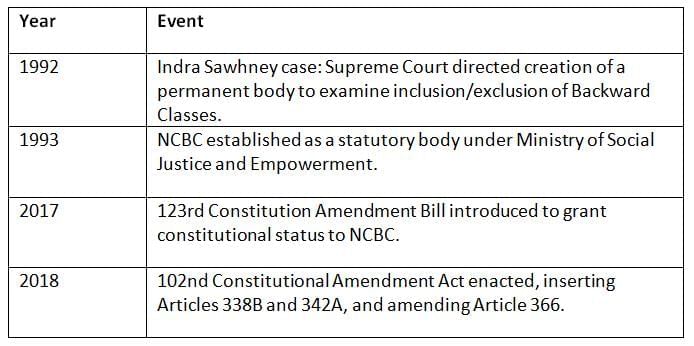
Key Points: The NCBC’s constitutional status, formalized in 2018, reflects a judicial push for a dedicated body to ensure Backward Classes’ welfare and protection.
Structure of the National Commission for Backward Classes
The NCBC is a multi-member body appointed by the President, designed to oversee the welfare of SEdBCs with flexible service conditions.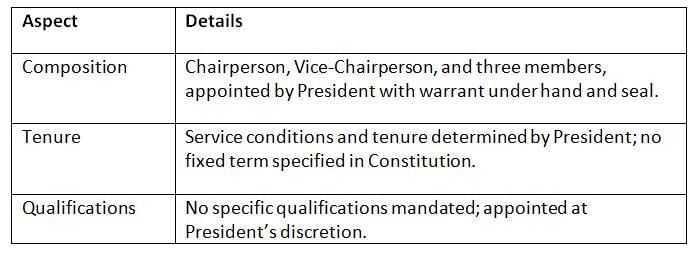
Key Points: The NCBC’s structure ensures leadership for SEdBC welfare, with appointment and terms set by the President for flexibility.
Constitutional Provisions
The 102nd Amendment Act, 2018, introduced key articles to empower the NCBC and regulate the identification of backward classes.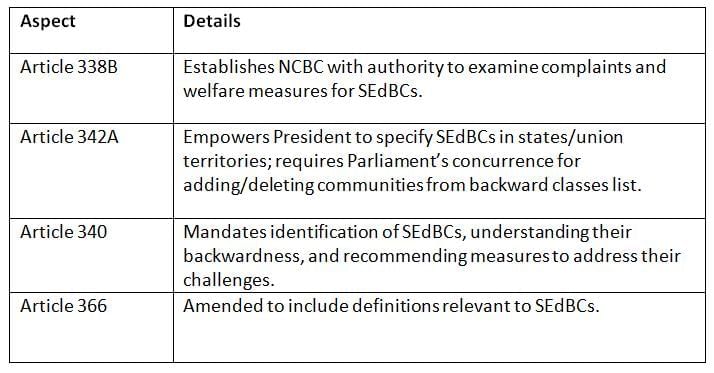
Key Points: The constitutional provisions grant NCBC authority over SEdBC welfare and ensure transparency in identifying backward classes.
Powers and Functions of the National Commission for Backward Classes
The NCBC monitors safeguards, investigates complaints, and advises on the socio-economic development of SEdBCs to promote their welfare.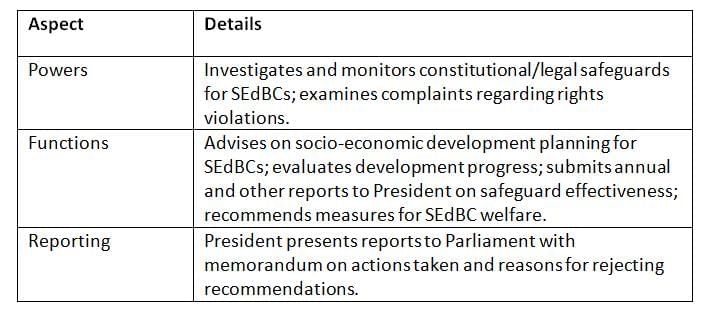
Key Points: The NCBC’s powers and functions focus on safeguarding SEdBC rights, promoting development, and ensuring accountability through reporting.
Differences from Earlier Version
The constitutional NCBC, established in 2018, has expanded roles compared to its statutory predecessor, emphasizing development and grievance redressal.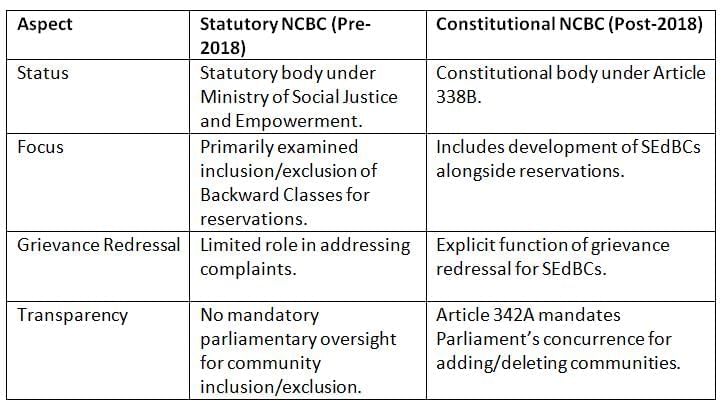
Key Points: The new NCBC emphasizes development, grievance redressal, and transparency, marking a significant shift from its statutory role.
Issues with the National Commission for Backward Classes
Despite its constitutional status, the NCBC faces challenges that limit its effectiveness in addressing SEdBC needs.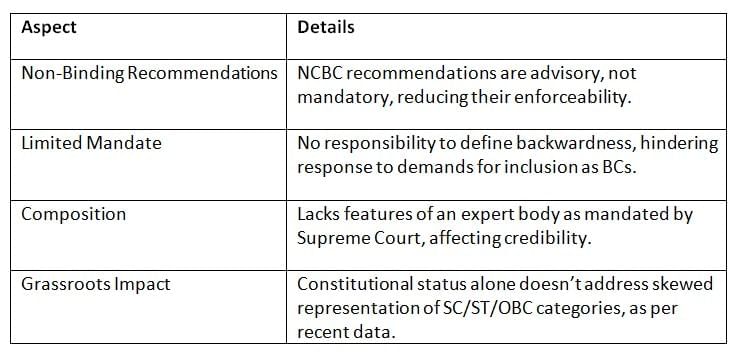 Key Points: The NCBC’s advisory nature, limited mandate, and lack of expert composition restrict its ability to fully address SEdBC challenges.
Key Points: The NCBC’s advisory nature, limited mandate, and lack of expert composition restrict its ability to fully address SEdBC challenges.
Suggestions for Improvement
Reforms are needed to enhance the NCBC’s effectiveness in promoting SEdBC welfare and addressing systemic issues.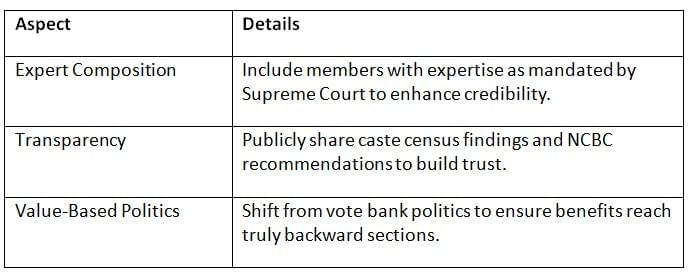 Key Points: Strengthening NCBC’s composition, transparency, and policy focus can improve its impact on SEdBC welfare.
Key Points: Strengthening NCBC’s composition, transparency, and policy focus can improve its impact on SEdBC welfare.
Chronology for Quick Revision
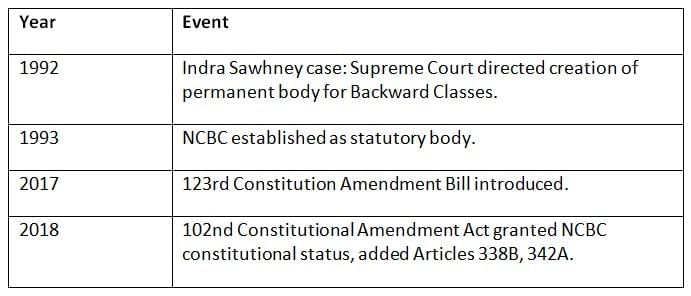
Conclusion
This chapter highlights the National Commission for Backward Classes as a vital constitutional body under Article 338B, established to safeguard and promote the welfare of socially and educationally backward classes. Evolving from a statutory body to a constitutional one through the 102nd Amendment Act, 2018, the NCBC now focuses on development, grievance redressal, and transparency. Despite challenges like non-binding recommendations and limited mandate, reforms in composition and transparency can enhance its effectiveness. The NCBC remains essential for advancing equity and socio-economic progress for SEdBCs in India.
|
142 videos|777 docs|202 tests
|
FAQs on Cheat Sheet: National Commission for Backward Classes - Indian Polity for UPSC CSE
| 1. What is the purpose of the National Commission for Backward Classes (NCBC) in India? |  |
| 2. How is the structure of the National Commission for Backward Classes organized? |  |
| 3. What are the constitutional provisions that relate to the National Commission for Backward Classes? |  |
| 4. What powers and functions does the National Commission for Backward Classes possess? |  |
| 5. How does the National Commission for Backward Classes differ from earlier versions of such commissions in India? |  |















